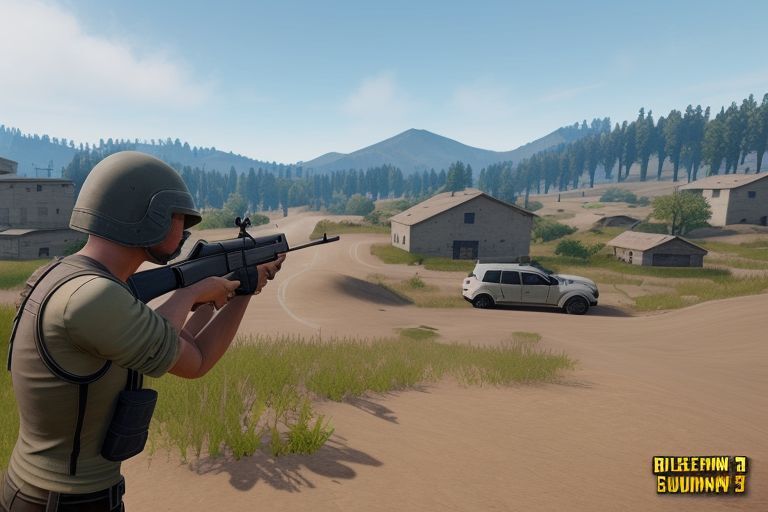Disclaimer: While this article provides in-depth information on improving aim in PUBG, it’s important to remember that consistent practice and personal experimentation are key to achieving significant improvement.
Understanding the Fundamentals
Before diving into specific techniques, it’s crucial to grasp the foundational elements of aim in PUBG:
- Sensitivity: Find the right balance between accuracy and speed. Too low sensitivity can hinder quick reactions, while too high might lead to inaccuracy.
- Recoil Control: Mastering recoil patterns is essential for sustained fire accuracy. Different weapons have unique recoil characteristics.
- Leading Targets: Anticipate target movement, especially for long-range shots.
- Crosshair Placement: Maintain consistent crosshair positioning to improve reaction time and shot accuracy.
- Game Settings: Optimize graphics settings to enhance visibility and reduce input lag.
Building a Strong Foundation
- Master the Basics:
- Training Mode: Utilize the training ground to practice different weapons, recoil control, and target acquisition.
- Warm-up: Before jumping into matches, spend a few minutes practicing in the training ground to get warmed up.
- Understand Your Playstyle:
- Aggressive or Passive: Different playstyles require different aim techniques. Aggressive players need quick reflexes, while passive players focus on precision.
- Weapon Preference: Specialize in a few weapon types to develop muscle memory and improve aim consistency.
- Optimize Controls:
- Thumbstick Sensitivity: Experiment with different sensitivities to find what works best for you.
- Button Layout: Customize your button layout for optimal comfort and accessibility.
- Dead Zones: Adjust dead zones to prevent unintended movement.
Advanced Aim Techniques
- Recoil Control Mastery:
- Understand Recoil Patterns: Every weapon has a distinct recoil pattern. Practice controlling recoil for each weapon.
- Grip Attachments: Utilize grip attachments to reduce recoil. 1. PUBG Mobile tips and tricks: How to reduce weapon recoil in the game – Times of India timesofindia.indiatimes.com
- Mouse Movement: Compensate for recoil by moving your mouse in the opposite direction.
- Tracking and Leading:
- Smooth Tracking: Practice tracking moving targets without jerky movements.
- Lead Your Shots: Anticipate target movement and adjust your aim accordingly.
- Crosshair Placement: Keep your crosshair centered on the target’s body for quick reactions.
- Game Sense and Awareness:
- Positioning: Choose advantageous positions that provide good visibility and cover.
- Enemy Prediction: Anticipate enemy movements based on their behavior and surroundings.
- Map Knowledge: Familiarize yourself with the map to understand potential engagement areas.
Consistent Practice and Improvement
- Dedicated Practice:
- Daily Practice: Set aside time for regular aim training.
- Variety: Practice different scenarios and weapon combinations to improve versatility.
- Record Gameplay: Analyze your gameplay to identify areas for improvement.
- Mental Focus:
- Avoid Distractions: Minimize distractions during gameplay.
- Stay Calm: Maintain composure under pressure.
- Positive Mindset: Believe in your ability to improve.
- Learn from Others:
- Watch Pro Players: Observe professional players to learn their techniques.
- Seek Feedback: Ask experienced players for advice and tips.
- Join Communities: Participate in online forums and communities to share knowledge and learn from others.
Additional Tips
- Warm-up Before Matches: A quick warm-up can improve your initial accuracy.
- Experiment with Different Weapons: Trying different weapons helps develop muscle memory and adaptability.
- Take Breaks: Avoid burnout by taking short breaks during extended play sessions.
- Stay Hydrated and Rested: Proper hydration and sleep contribute to improved focus and reaction time.
- Consider Aim Trainers: Some players find aim trainers beneficial for specific skill development.
Remember: Improving aim takes time and dedication. Don’t get discouraged by setbacks. Stay persistent, analyze your gameplay, and continuously strive to enhance your skills. With consistent practice and the right approach, you can significantly improve your aim in PUBG and achieve your desired rank.
Would you like to focus on a specific aspect of aim improvement, such as recoil control, sensitivity settings, or training methods?
